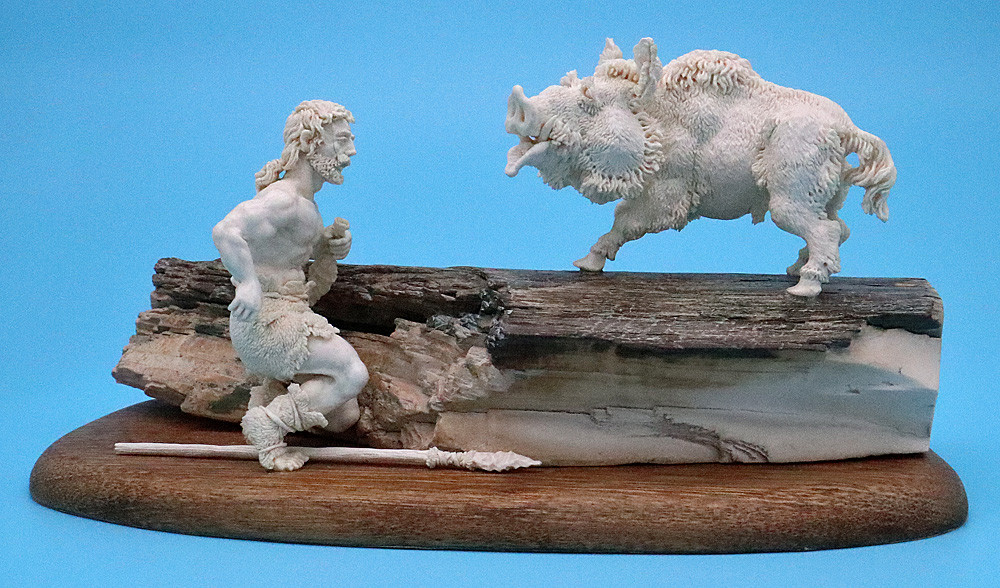Mammoths were large herbivorous mammals, closely related to modern-day Indian elephants. The mammoth became extinct over 10,000 years ago during the last Ice Age. It is believed that mammoths used their long, curved tusks for clearing away ice and snow to reveal the vegetation underneath. These large tusks, measuring up to 10 ½ feet in length, are still being found in the arctic regions of Alaska, Canada and Siberia, preserved in the “Perma-frost” (permanently frozen ground). In rare instances an entire preserved mammoth has been found.
Natives living in these remote arctic regions have used the ivory of these preserved tusks for making buttons, knife handles, stakes for securing their shelters against the harsh conditions, and even as running blades for their sleds.
Mammoth ivory varies in color from a creamy white to dark brown depending on the minerals the ivory has been exposed to over the centuries. Like modern elephant ivory, mammoth ivory has a distinct cross-hatch pattern and a visible wood-like grain. Unlike modern elephant ivory, ancient mammoth ivory can be used to make beautiful pieces of jewelry and carving that we can enjoy without the worry of endangering a living species.

